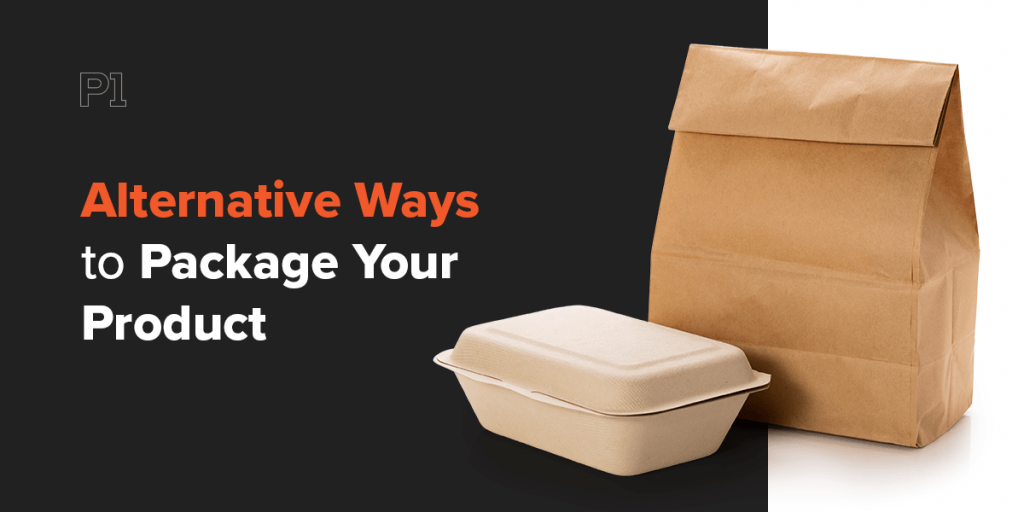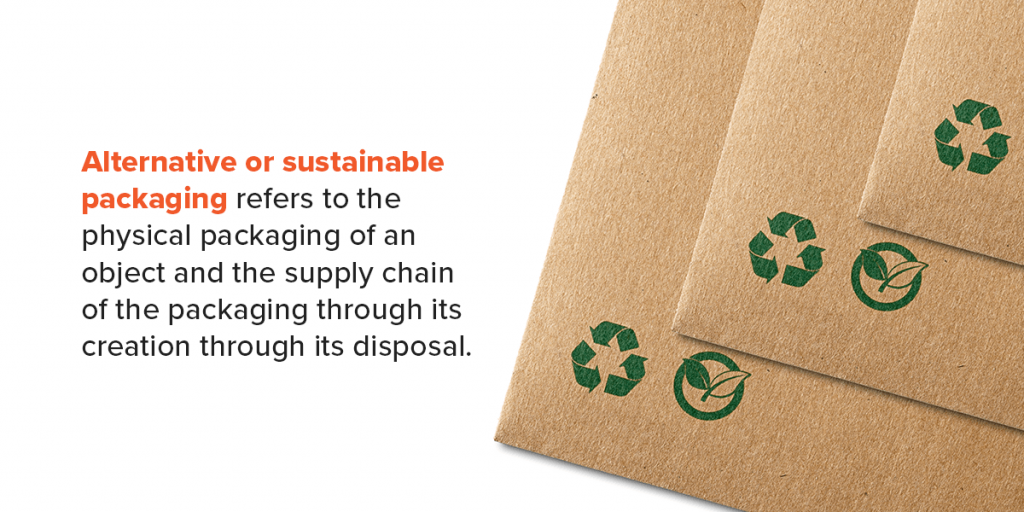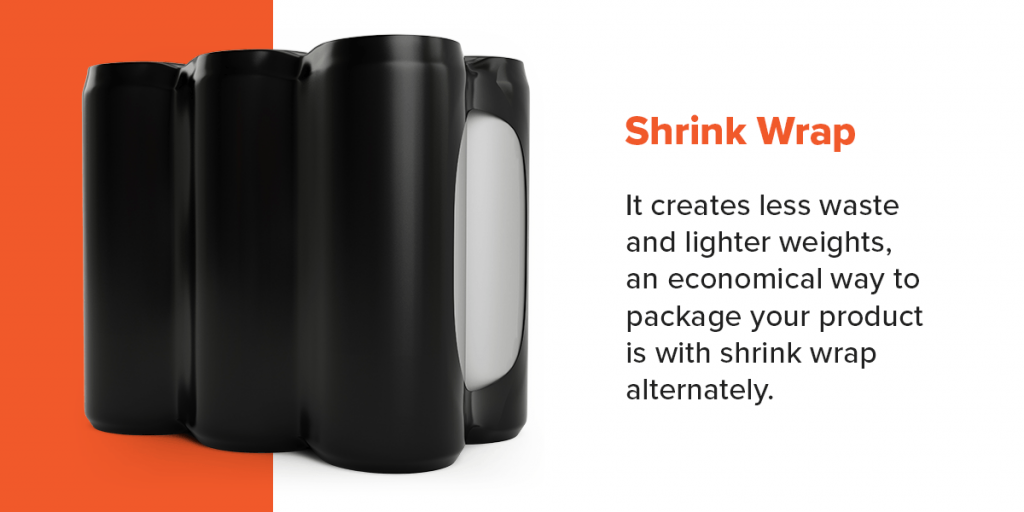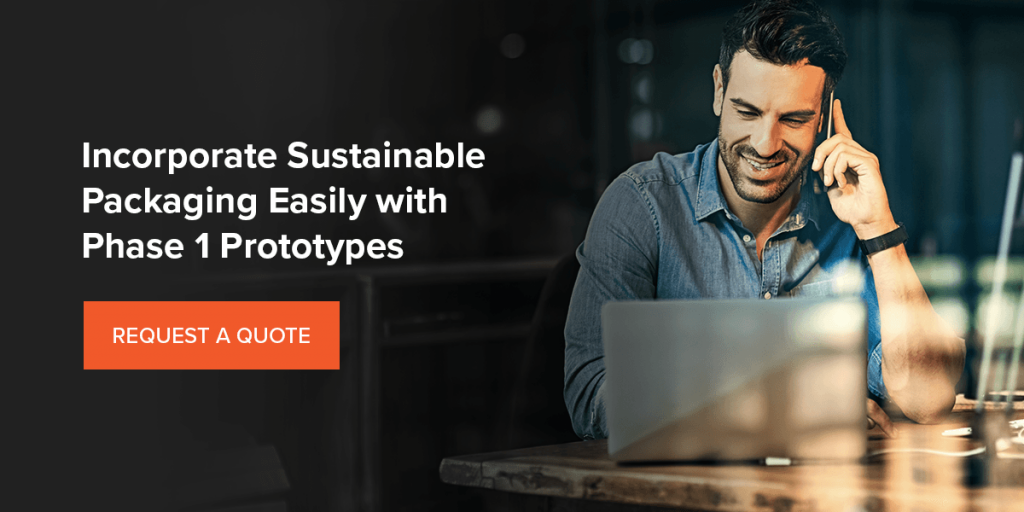Alternative Ways to Package Your Product
By: phase1
With an increasing number of people ordering products from online stores and the trend of unboxing vlogs becoming more popular, people are realizing how many unsustainable materials companies use to package their products. As customers acknowledge the excessive or non-environmental friendly packaging that companies use, they are choosing to shop brads with more sustainable and eco-friendly packaging.
Companies typically maintain a consumer consciousness, recognizing the needs and wants of customers to keep their business. Also, awareness of the wants of consumers allows you to tailor your product and its packaging to them, attracting customers whose needs other companies did not meet.
Therefore, by using alternative packaging strategies, you and your company are not only contributing to a healthier environment, but you are also retaining or attracting business from environmentally concerned consumers.

What Is Alternative Packaging?
Alternative or sustainable packaging refers to the physical packaging of an object and the supply chain of the packaging through its creation through its disposal. Alternative packaging avoids the use of harmful materials, such as plastic, styrofoam and cardboard, and focuses instead on factors benefitting its consumers and the environment.
This means that your company’s retail or e-commerce packaging should concentrate on the safety and health of consumers, clean production practices and renewable energy sourcing. Alternative packaging also encourages you to meet the requirements of using recycled or renewable materials, materials that meet the market’s criteria for cost and performance, materials manufactured to remain healthy throughout their life cycles and materials that recover effectively and have closed-loop industrial or biological processes.
Sustainability focuses on social equity and the environment in addition to profitability, holding companies accountable for the environmental, social and economic effects of their production cycles. Because of the constant growth in the demographic of environmental-minded consumers, more people will scrutinize your company’s participation in eco-friendly production, dictating their choice of whether they want to support your products.
Another way to evaluate the sustainability of your packaging material is to check if your packaging qualifies as effective, efficient, cyclic and safe. More specifically, if your packaging is effective, it protects its contents while also adhering to responsible and informed consumption guidelines for consumers.
It is efficient if your company uses the packaging in the best way possible. Having cyclic packaging means that its material technically or naturally cycles through its lifespan without degradation or large amounts of additives. The safety of the packaging refers to the idea that each aspect of your packaging does not harm the health of humans or the environment.
Why Use Alternative Packaging?
To comply with the wants of environmentally aware consumers and the environmental needs of cleaner and more renewable resources, you and your company must switch to alternative packaging. Using recyclable or reusable materials will simultaneously help your company retain or gain the business of environmentally conscious consumers and can help protect the environment.
In addition to the improved customer perception and the positive environmental impact of alternative packaging, another reason to make the switch is that it can save your company money. For example, depending on how you currently package your products, alternative packaging may be lower in cost because of its use of lighter weight or more inexpensive recycled materials.
Another way your packaging plan can save your company money is through the reduction of shipping costs. The lighter materials and reduced packaging of alternate packing methods can reduce shipping costs by lessening your product’s weight and the effort needed to transport it.
Also, alternative packaging can save money by guaranteeing the protection of your product. Using sustainable packaging that keeps your product intact during its shipping allows for both lower packaging production costs and fewer instances of product replacement due to damage during shipping, boosting your profit margins.
Aside from the monetary aspect of production, alternative packaging may be space-saving or more easily stored than your regular packaging. Paper packaging products save space, allowing your company more room for storage. For example, if you use corrugated boxes or boxes that perfectly fit the needs of your product, you can stack or store your boxes more efficiently.
![Alternative Ways to Package Your Product [list]](https://phase1prototypes.com/content/uploads/2021/10/03-Alternative-Ways-to-Package-Your-Product-527x1024.png)
Alternative Ways to Package Your Product
With about 75% of the American population expressing concern for the environment and an increasing number of people who make an effort to protect the environment in their everyday lives, it is essential to keep your company on track with its consumers. To encourage customers to help protect the environment while remaining loyal to your company, you must find alternative ways to package your product.
Here are ten sustainable packaging options you can adopt into your company for a more eco-friendly company:
Recycled Materials
Using recycled materials is a simple change to make in your product packaging. There is a multitude of materials that are explicitly recycled for packaging purposes. Using these recycled materials also encourages consumers to recycle them again after opening the package because recycled materials are inherently recyclable, considering how they are made.
Repurposable Packaging
Repressible packaging, such as glass jars, durable bags, aluminum containers or paper wrapping, is an eco-friendly way to package your products. Repurposable packaging is an attractive feature for consumers because it is environmentally friendly and users are essentially getting an extra feature in addition to their product.
Biodegradable Packaging
Biodegradable packaging breaks down relatively quickly and is beneficial for the environment. It allows consumers to compost your packaging, preventing it from ending up in a landfill for an extended period of time or from sitting on the side of the road, unable to break down naturally.
Paper Materials
Switching your packaging to paper materials is another good way to make your packaging more sustainable. Paper, on average, takes between two to six weeks to decompose, compared to the hundreds of years it can take plastic. Also, unlike other packaging, paper is recyclable, or consumers can reuse it for other purposes.
Also falling into this category are cardboard boxes, as they are a type of hard paper stock. Cardboard is already a recycled product, meaning that consumers can then recycle it again to be repurposed once more. Alternately, if you package your products in sturdy cardboard boxes with an attractive design, consumers are likely to reuse the box within their own homes.
Reusable Containers
Another critical aspect of sustainable packaging is using reusable materials. If your company packages its products in reusable containers, this prevents them from being thrown away or disposed of at all. Instead, consumers are likely to keep the packaging in their home and repurpose it for another use.
Metal Packaging
Containers made of metals, such as steel, aluminum and tin, are easy to recycle and you can recycle them repeatedly, meaning less of a need to mine more. When deciding if metal packaging is a good option for you, consider how it protects your product, its durability, sterility, and safety.
Bulk Bins
Bulk bins reduce the amount of packaging needed or eliminate a layer of packaging. Merchandisers use bulk containers so consumers can take the product they want and leave the rest in the bin for others to take. This makes it so that there is less individual packaging. There is a mass of your product in one container, so ensure that this type of packaging is safe and sanitary for your kind of product before attempting this type of alternative packaging.
Similar to bulk bins, another option for mass packaging is a point of purchase, or POP, display. POP displays are cardboard displays designed to draw a customer’s attention in a crowded store. These layouts use minimal packaging and space-saving designs, making them eco-friendly and cost-efficient for your company.
Plant-Based Packaging
Another sustainable packaging option is using plant-based materials. Because this type of packaging is natural and compostable, it is a good option for specific products. One drawback, however, is that this type of packaging is not easily reusable. Since it is compostable, this material requires more manufacturing, increasing the energy needed to produce this product in excess amounts.

Shrink Wrap
It creates less waste and lighter weights, an economical way to package your product is with shrink wrap alternately. Shrinkwrap is also a good option for certain products because companies like Phase 1 Prototypes can use advanced printing capabilities to capture your brand, replicating the previous packaging or helping you rebrand your product in a more environmentally friendly way.
Natural Fiber Cloth
Cloth bags and other natural fiber packaging are good options for sustainable product packaging. Using natural cloth without bleaches and dyes makes cloth packaging safe and non-toxic. Cloth packaging is also reusable and an attractive option for consumers that may draw the attention of new or irregular customers.
Factors to Consider When Choosing Alternative Packaging
When choosing alternative packaging for your company, there are many things to keep in mind to ensure that you express the voice of your brand through your product’s packaging, introducing your purpose and values at the consumer’s first look at your product. After package changes or product or company rebranding, one of the main things to consider is public perception and intended audience. If you want your audience to consider your brand, you want to make a positive first impression on new consumers.
Decide who your target audience is and brand your product to that audience. The personality of your product should shine through the packaging and should match the vibes of the audience you attend to market towards. Develop a brand voice based on the demographics you want to attract and consistently use that style throughout the entire design of your product and its packaging. Suppose you already have an established brand but want to change your packaging to make it more eco-friendly.
In that case, it is essential to consider how you can make these changes without disrupting the already recognized brand associated with your company. Avoid changing the font or colors of your brand so that the product is still recognizable, but emphasize that the purpose of the change was to have more sustainable packaging. It would help if you acknowledged the shift in the packaging while expressing that the product still has the same purpose and value as before to keep the business of loyal customers.
Cost
Another important consideration when choosing alternative packaging is the cost. When making these alterations to your product packaging, the first thing to think about is how sustainable packaging materials can create a positive association with your brand for customers while also reducing the cost of raw materials used in packaging creation. Similarly, creating smaller packaging or minimizing excess material reduces packaging production costs and saves space on the shelf and shipping your product.
This allows you to maximize profits by having a lower production cost while having more shelf space and an effect that affects the environment that customers find attractive. When looking at sustainable packaging options, an additional factor to assess is the durability of the new packaging. You must ensure that the eco-friendly packaging you choose works well with your product and has all the packaging aspects your product requires. Test your product packaging design to ensure that it can withstand the casual wear and tear that comes with the transportation of products.
You want your product to be protected without using excess packing materials that consumers may see as wasteful. One study reports that 55% of its respondents said that packages that were difficult to open were the most significant irritant during their packaging experiences. Additionally, 19% cite excessive packaging to be an annoyance.
Based on these statistics, you need to find a packaging material that consumers can open and discard easily. Even though you want to keep your product safe, excessive packaging material negatively affects your product’s environment and draws negative attention. Avoid these downfalls by testing your packaging to ensure its durability and reliability without overdoing it.
Incorporate Sustainable Packaging Easily with Phase 1 Prototypes
Because of the positive impacts, sustainable packaging has on the environment and a brand’s public perception, switching to alternative packaging is an increasingly attractive option for businesses. While this may seem like a complex and expensive change, at Phase 1 Prototypes, we can help alleviate the stress that comes with such a significant change by providing you with multiple sustainable packaging options.
We offer many eco-friendly, durable, and cost-effective packaging solutions and can help find one that fits your company’s needs. We take pride in supporting the vision of your brand to come to life quickly and easily.
Request a quote today and within hours, we will contact you to discuss your product. Within 24 hours of receiving your approval, we will begin prototyping the packaging you imagined. Whether you need one or hundreds of your designs, at Phase 1 Prototypes, we take pride in the quality and speed of our packaging solutions.


Leave a Reply